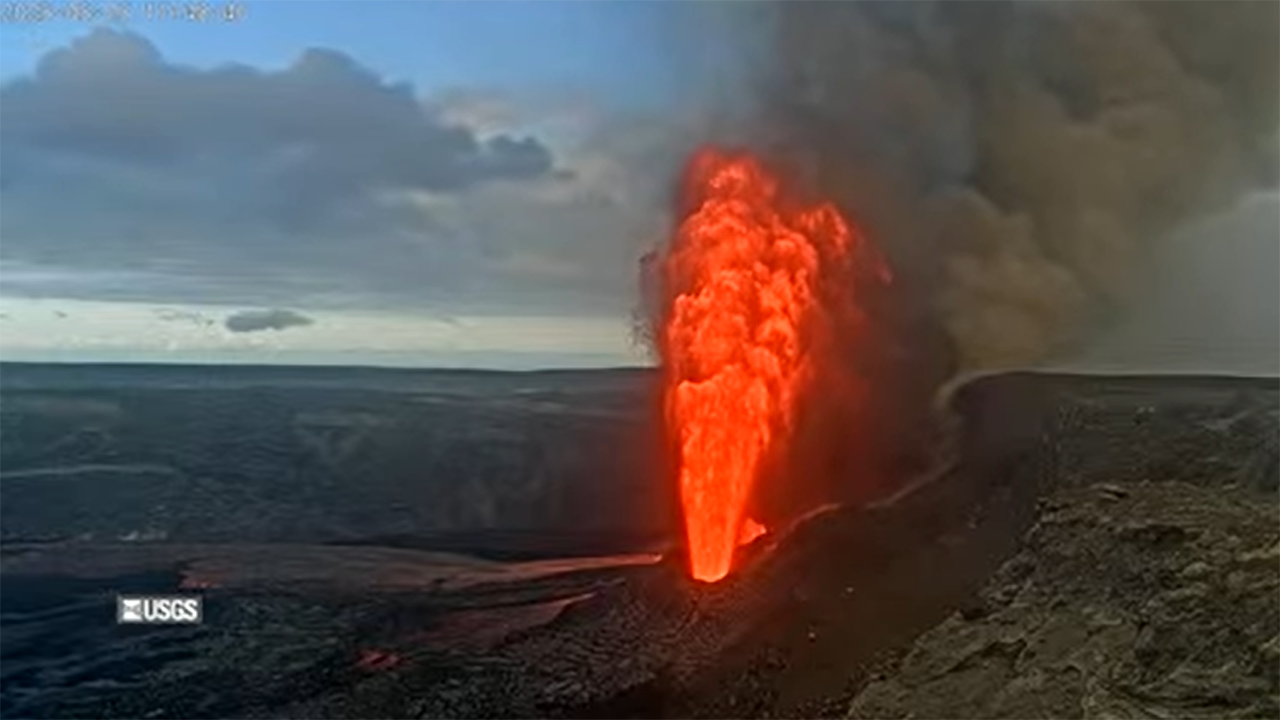Hawaii’s Kīlauea volcano shoots lava fountains 1,000 feet into the sky

Kīlauea Volcano, located along the southeastern shore of Hawaii Island, recently experienced a spectacular event known as “lava fountaining,” with lava shooting up to at least 1,000 feet high over the weekend. This volcanic activity is not uncommon for Kīlauea, which is considered one of the world’s most active volcanoes by the United States Geological Survey (USGS). The volcano has been erupting intermittently since December 23, 2024, within the summit caldera in Hawaiʻi Volcanoes National Park.
The 23rd episode of precursory activity began late last week with reports of “low-level spattering and flames.” Small lava fountains and lava overflows from the north vent were observed around 11:30 a.m. on Saturday, marking the start of the latest eruption cycle. The Hawaiʻi Volcanoes National Park Service warned that sustained fountaining could be expected at any time throughout the weekend.
According to the USGS, Kīlauea is currently in a unique phase of activity in Halemaʻumaʻu, with multiple episodes of dual lava fountains occurring since the eruption began. Two eruptive vents, known as the north and south vent, are located in the southwest part of the caldera and have been intermittently active, producing new lava flows over parts of the Halemaʻumaʻu crater surface.
As of Sunday evening, the south vent had lava fountains reaching 230 feet high, while the north vent was experiencing lava fountains up to 1,000 feet high, as reported by Hawaii News Now. USGS livestreams of the eruption site showed the lava fountains gradually decreasing in height and eventually stopping, with the vents still glowing and lava visible on the crater floor.
The recent fountaining episode at Kīlauea lasted for about 10 hours, following similar events earlier in the month on May 11, May 6, and May 2, which lasted between 4.5 to 8 hours each. The USGS reported that pressure building beneath the surface prior to a lava fountaining episode causes an inflationary tilt, which then switches to a deflationary tilt as the pressure is released during the eruption.
Despite the frequent lava fountain episodes, the USGS notes that the summit of Kīlauea has shown little net change in pressurization since the eruption began in December. This pattern of inflation and deflation has created a saw-tooth pattern in ground tilt records over the past several months.
Overall, the volcanic activity at Kīlauea continues to be closely monitored by scientists and park officials to ensure the safety of residents and visitors in the area. The beauty and power of nature are on full display as Kīlauea Volcano puts on another awe-inspiring show of lava fountaining for all to witness.




